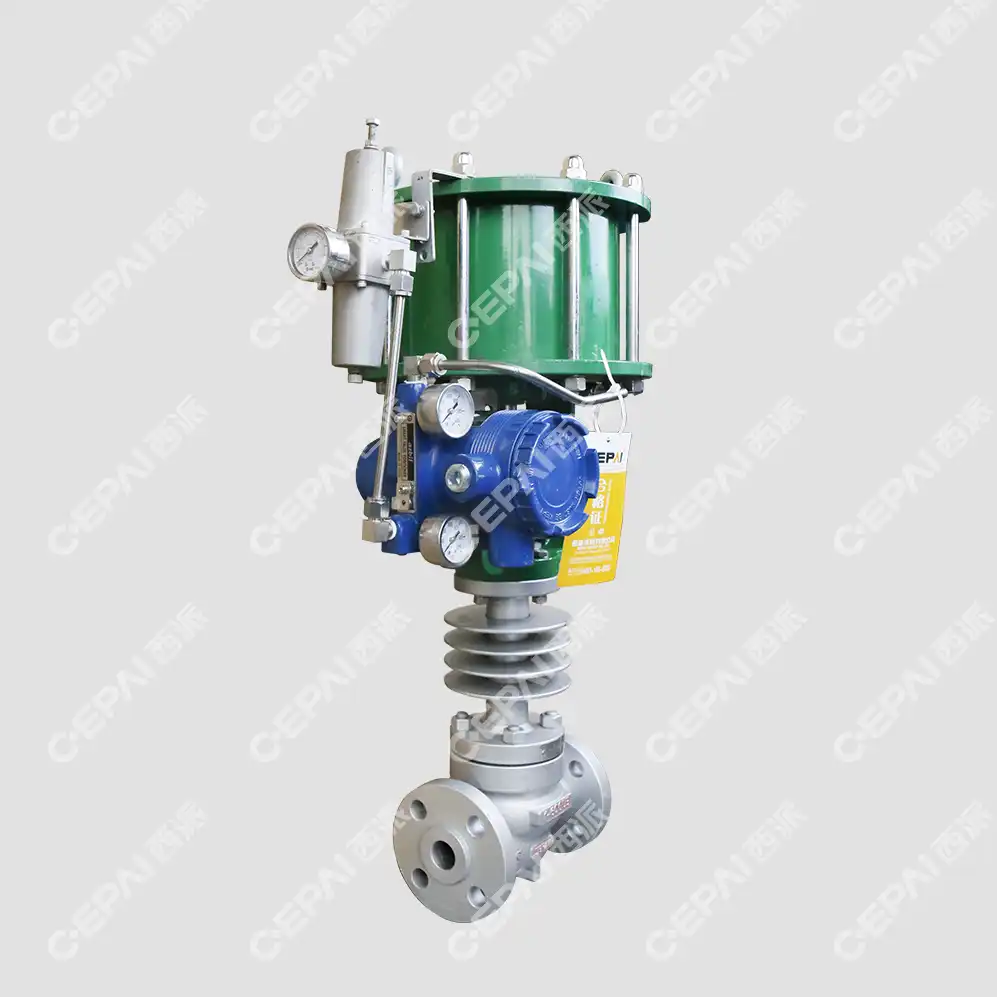Understanding Fire Safe Valve Testing Standards
The Importance of Fire Safe Valves
Fire safe valves play a pivotal role in safeguarding industrial processes and personnel in high-risk environments. These specialized products are designed to maintain their integrity and functionality even when exposed to extreme temperatures and flames. Their primary purpose is to prevent the spread of fire and contain hazardous materials during emergency situations. By effectively sealing off sections of a pipeline or process system, fire safe valves help minimize damage and potential catastrophic failures.
The significance of these products extends beyond mere compliance with safety regulations. They serve as a critical line of defense in industries such as oil and gas, chemical processing, and power generation, where the consequences of a fire can be devastating. Fire safe valves contribute to overall plant safety, protect valuable assets, and most importantly, save lives in the event of a fire outbreak.
Key Testing Standards for Fire Safe Valves
Several established testing standards govern the certification of fire safe valves. These standards provide a comprehensive framework for evaluating product performance under fire conditions. Some of the most widely recognized standards include:
- API 607: Fire Test for Quarter-turn Valves and Valves Equipped with Nonmetallic Seats
- API 6FA: Specification for Fire Test for Valves
- BS EN ISO 10497: Testing of Valves - Fire Type-testing Requirements
- API 6FB: Fire Test for End Connections
Each of these standards outlines specific testing procedures, acceptance criteria, and performance requirements that the products must meet to be classified as fire safe. They cover various aspects such as leakage rates, pressure retention, and operational functionality before, during, and after exposure to fire.
Components of Fire Safe Valve Testing
Fire safe valve testing encompasses several crucial components to ensure comprehensive evaluation of the product performance under extreme conditions. These components typically include:
- Pre-fire testing: Assessing the product functionality and leakage rates under normal operating conditions
- Fire exposure: Subjecting the product to controlled fire conditions for a specified duration
- High-temperature operation: Evaluating the product's ability to operate (open and close) while at elevated temperatures
- Post-fire testing: Measuring leakage rates and operational performance after the fire exposure
- Cool-down period: Assessing the product integrity and functionality after cooling to ambient temperature
These components work together to simulate real-world fire scenarios and provide a holistic evaluation of a product's fire safe capabilities. By rigorously testing the products across these different stages, manufacturers and end-users can gain confidence in the product's ability to perform reliably in critical situations.
Key Factors in Fire Safe Valve Performance
Material Selection and Its Impact
The choice of materials used in fire safe valve construction significantly influences their performance under extreme conditions. High-temperature-resistant alloys, such as stainless steel and nickel-based alloys, are commonly employed for the product bodies and trim components. These materials maintain their structural integrity and mechanical properties even when exposed to intense heat.
Seat materials require special consideration in fire safe valve design. Traditional soft seat materials like elastomers or plastics may degrade or melt under fire conditions. To address this, fire safe valves often incorporate metal-to-metal seating arrangements or utilize specialized fire-resistant sealing materials. Some advanced designs feature a combination of soft and metal seats, providing tight shutoff during normal operation and reliable sealing during fire events.
The selection of appropriate stem packing and gasket materials is equally crucial. Graphite-based packing and spiral-wound gaskets with metal and graphite layers are commonly used due to their excellent thermal resistance and sealing properties under high temperatures.
Design Features for Enhanced Fire Safety
Fire safe valves incorporate several design features that enhance their ability to withstand and function during fire events. Some key design elements include:
- Thermal expansion compensation: Allowing for controlled expansion of product components to prevent binding or leakage
- Fire-resistant coatings: Applying specialized coatings to protect vulnerable components from direct flame impingement
- Pressure-energized seals: Utilizing seals that become more effective under increased pressure during fire conditions
- Robust actuator connections: Ensuring that the product stems and actuators remain operational even when exposed to high temperatures
- Fail-safe mechanisms: Incorporating features that ensure the product moves to a safe position (open or closed) in case of actuator failure
These design features work in concert to maintain product integrity, minimize leakage, and ensure operational reliability during fire events. By carefully considering these elements, valve manufacturers can create products that meet or exceed the stringent requirements of fire safe testing standards.
Maintenance and Inspection Considerations
Regular maintenance and inspection are vital for ensuring the continued fire safe performance of valves throughout their operational life. A comprehensive maintenance program should include:
- Periodic visual inspections to check for signs of wear, corrosion, or damage
- Regular testing of the product operation to verify smooth movement and proper seating
- Lubrication of moving parts with high-temperature greases or dry film lubricants
- Replacement of soft components, such as seals and gaskets, at recommended intervals
- Non-destructive testing techniques to assess the integrity of critical product components
Proper documentation of maintenance activities and test results is essential for regulatory compliance and traceability. Plant operators should establish clear procedures for the inspection and maintenance of fire safe valves, taking into account manufacturer recommendations and industry best practices.
Additionally, staff training on the importance of fire safe valves and their proper handling is crucial. Operators and maintenance personnel should be well-versed in the specific requirements and potential failure modes of these critical components to ensure their effectiveness in emergency situations.
Implementing Fire Safe Valve Testing in Your Facility
Developing a Comprehensive Testing Program
Implementing a robust fire safe valve testing program is essential for ensuring the reliability and safety of your facility's product systems. A comprehensive testing program should encompass several key elements to effectively evaluate and maintain fire safe valve performance.
Start by identifying all critical products in your facility that require fire safe certification. This typically includes products in high-risk areas, emergency shutdown systems, and those handling flammable or hazardous materials. Once identified, create a detailed inventory of these products, including their specifications, locations, and service conditions.
Develop a testing schedule that aligns with industry standards and regulatory requirements. This schedule should factor in the product's criticality, operating conditions, and manufacturer recommendations. For some products, annual testing may be sufficient, while others may require more frequent evaluations.
Establish clear testing procedures that adhere to the relevant fire safe valve testing standards. These procedures should outline the specific steps, equipment, and acceptance criteria for each test. Ensure that your testing protocols cover all aspects of fire safe performance, including leakage rates, operational functionality, and post-fire integrity.

Training and Certification Requirements
Proper training and certification of personnel involved in fire safe valve testing are crucial for ensuring the accuracy and reliability of test results. Develop a comprehensive training program that covers the following areas:
- Understanding of fire safe valve design principles and failure modes
- Familiarity with relevant testing standards and procedures
- Proper use of testing equipment and interpretation of results
- Safety precautions and emergency response protocols during testing
- Documentation and reporting requirements
Consider partnering with the product manufacturers or specialized training organizations to provide in-depth instruction on fire safe valve testing techniques. Implement a certification process for your testing personnel, requiring them to demonstrate proficiency through both theoretical knowledge and practical skills assessments.
Regularly update your training program to incorporate new technologies, standards revisions, and lessons learned from industry experiences. Encourage continuous learning and professional development among your testing staff to maintain a high level of expertise in fire safe valve evaluation.
Documentation and Reporting Best Practices
Effective documentation and reporting are essential components of a successful fire safe product testing program. Implement a robust system for recording, analyzing, and storing test results and related information. Key aspects of documentation and reporting best practices include:
- Developing standardized test report templates that capture all relevant data points and observations
- Utilizing digital tools and software for efficient data collection, analysis, and trend tracking
- Implementing a secure and easily accessible document management system for storing test reports and related records
- Establishing clear procedures for reviewing and approving test results, including defined acceptance criteria and corrective action protocols
- Creating regular summary reports to highlight overall product performance trends and identify potential areas for improvement
Ensure that your documentation practices comply with regulatory requirements and industry standards for record-keeping. Maintain a clear audit trail that demonstrates the ongoing compliance and reliability of your fire safe valve systems.
Regularly review and analyze test data to identify patterns or trends that may indicate potential issues or areas for improvement in your product maintenance practices. Use this information to refine your testing program and optimize the performance of your fire safe valve systems over time.
Conclusion
Fire safe valve testing standards are crucial for ensuring the reliability and safety of industrial processes in high-risk environments. By understanding these standards and implementing comprehensive testing programs, facilities can significantly enhance their fire safety measures. Key factors such as material selection, design features, and proper maintenance play vital roles in valve performance. Developing a robust testing program, coupled with thorough training and effective documentation practices, is essential for maintaining the integrity of fire safe valve systems. As industries continue to evolve, staying informed about the latest developments in fire safe valve technology and testing methods remains paramount for safeguarding assets and personnel.
Contact Us
Enhance your facility's fire safety with CEPAI Group's state-of-the-art fire safe valves. Our products are rigorously tested to meet and exceed industry standards, ensuring maximum protection for your critical processes. Benefit from our expertise in the product design, manufacturing, and testing to improve your plant's safety and reliability. Contact us today at cepai@cepai.com to learn how our fire safe valve solutions can safeguard your operations.


_1746598531170.webp)



